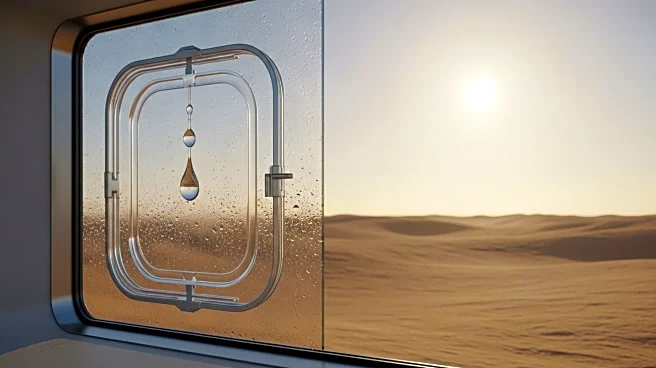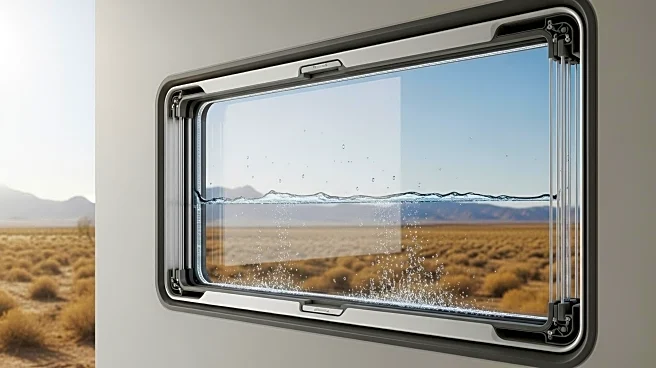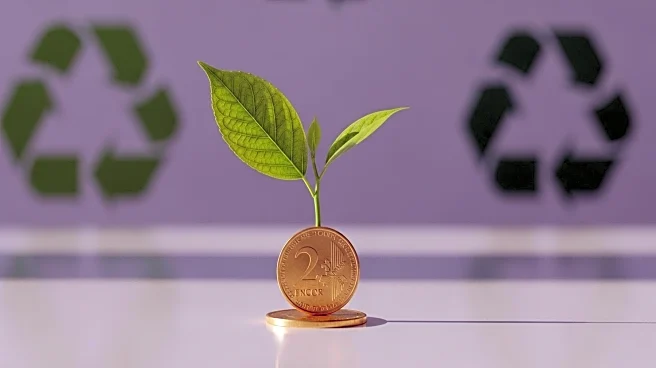What's Happening?
An international team of engineers has developed a groundbreaking window design capable of extracting drinking water from the air, even in extremely dry climates. This innovative technology was showcased at the 2025 Gizmodo Science Fair, where it won a prize for its ingenuity. The window utilizes a hydrogel made from a hydrophilic polymer network and hygroscopic salts, which absorb moisture from the air. The hydrogel is placed between two sheets of glass, functioning like a window. At night, when temperatures drop and humidity rises, the hydrogel collects water vapor. During the day, sunlight heats the window, causing the stored water to evaporate and condense on the glass. A tube at the bottom collects the condensation, providing up to two-thirds of a cup of water per day during tests in Death Valley, the driest location in the U.S.
Why It's Important?
This development holds significant potential for addressing water scarcity issues, particularly in arid regions where access to clean water is limited. By harnessing natural resources like sunlight and atmospheric moisture, this technology offers a sustainable solution for generating potable water. It could benefit communities in desert areas, reduce reliance on traditional water sources, and contribute to water conservation efforts. The ability to produce water in situ without extensive infrastructure could also aid in disaster relief and remote area support, providing a critical resource where it is most needed.
What's Next?
Further testing and refinement of the technology are likely to follow, with potential scaling for commercial or humanitarian use. Stakeholders such as environmental organizations, governments, and private companies may express interest in investing in or adopting this technology. Regulatory approvals and market readiness assessments will be crucial steps in bringing this innovation to broader application. Additionally, exploring partnerships for distribution and implementation in water-scarce regions could be a strategic focus.
Beyond the Headlines
The ethical implications of this technology include considerations of equitable access and affordability. Ensuring that this innovation reaches underserved populations without exacerbating existing inequalities will be a key challenge. Moreover, the environmental impact of producing and disposing of the hydrogel materials will need to be assessed to ensure sustainability. Long-term, this technology could influence water management policies and inspire further innovations in resource extraction from the environment.










